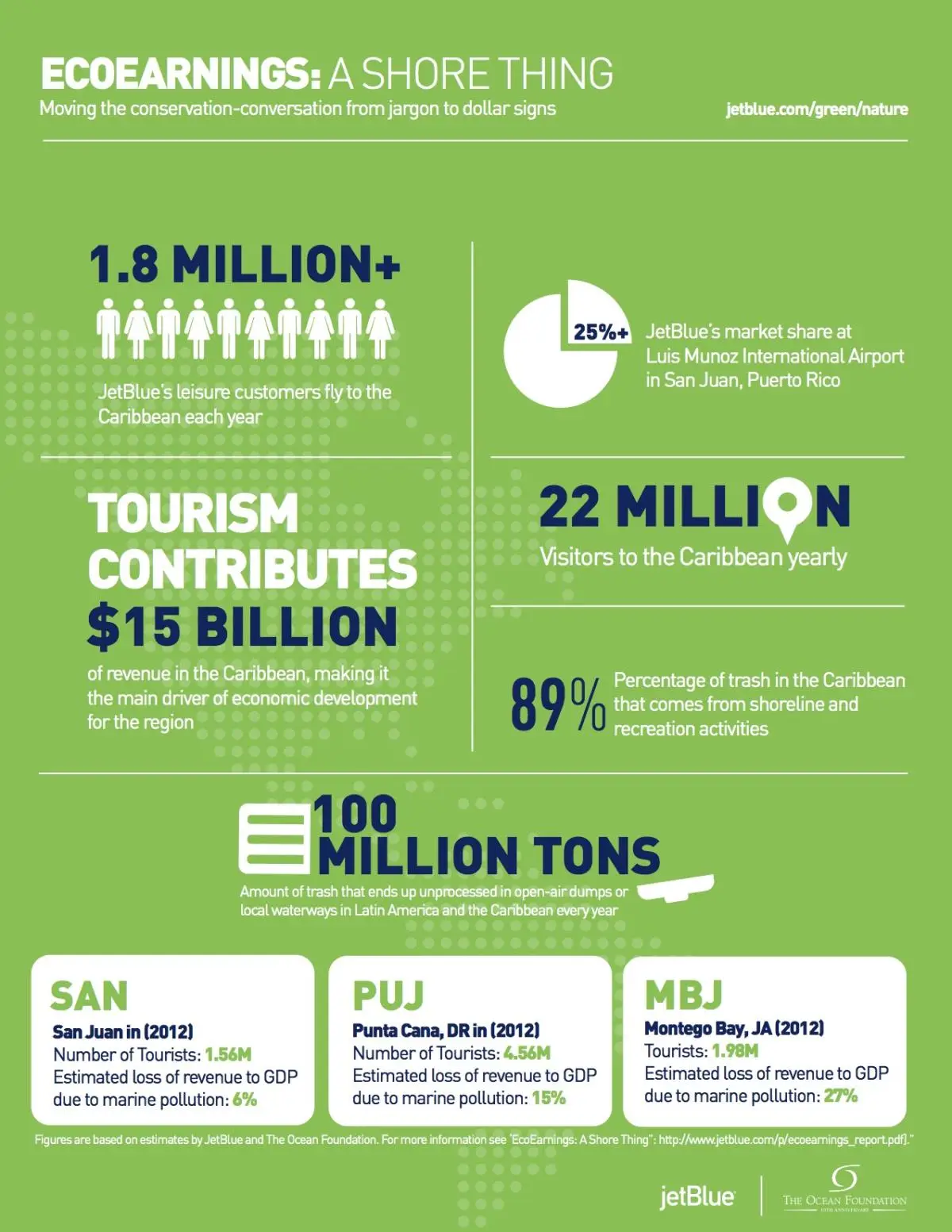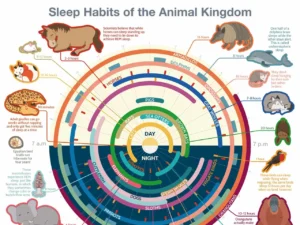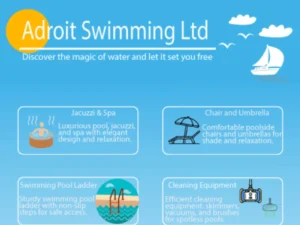Tourism is a vital economic driver in the Caribbean, contributing significantly to the region’s GDP. However, the environmental impact of tourism, particularly marine pollution, poses a serious threat to the sustainability of these economic benefits. This Eco Earnings: A Shore Thing – Moving the Conservation Conversation from Jargon to Dollar Signs infographic show here
EcoEarnings: A Shore Thing” by JetBlue and The Ocean Foundation, highlighting the economic importance of tourism and the urgent need for environmental conservation.

The Economic Impact of Tourism in the Caribbean
JetBlue’s Contribution
JetBlue plays a crucial role in Caribbean tourism, with over 1.8 million leisure customers flying to the region each year. The airline’s market share at Luis Munoz International Airport in San Juan, Puerto Rico, exceeds 25%, underscoring its significance in the Caribbean travel market.
Tourism Revenue
Tourism is the primary economic engine in the Caribbean, contributing $15 billion in revenue annually. This makes it the main driver of economic development in the region, supporting local businesses, creating jobs, and fostering community growth.
Visitor Numbers
The Caribbean attracts 22 million visitors yearly, highlighting the region’s global appeal. These visitors spend money on accommodations, dining, activities, and souvenirs, further boosting the local economy.
Environmental Challenges: Marine Pollution
Trash and Pollution
A staggering 100 million tons of trash end up unprocessed in open-air dumps or local waterways in Latin America and the Caribbean every year. This pollution primarily originates from shoreline and recreational activities, accounting for 89% of the total trash in the region.
Economic Loss Due to Pollution
Marine pollution not only harms the environment but also has a direct economic impact. For instance, in 2012:
San Juan, Puerto Rico (SAN): With 1.56 million tourists, the estimated loss of revenue to GDP due to marine pollution was 6%.
Punta Cana, Dominican Republic (PUJ): Welcoming 4.56 million tourists, the estimated GDP loss was 15%.
Montego Bay, Jamaica (MBJ): Attracting 1.98 million tourists, the GDP loss reached 27%.
The Need for Sustainable Practices
The data underscores the urgent need for sustainable practices to protect the Caribbean’s marine environment. By reducing marine pollution, the region can preserve its natural beauty, protect marine life, and ensure the long-term sustainability of its tourism industry. Efforts should include:
Enhanced Waste Management: Implementing better waste management systems to reduce the amount of unprocessed trash.
Public Awareness Campaigns: Educating locals and tourists about the impact of marine pollution and promoting responsible behavior.
Corporate Responsibility: Encouraging companies, especially those in the tourism sector, to adopt environmentally friendly practices.
Conclusion
The “EcoEarnings: A Shore Thing” infographic by JetBlue and The Ocean Foundation highlights the delicate balance between economic growth and environmental sustainability in the Caribbean. Tourism is a major economic driver, but marine pollution poses a significant threat. By adopting sustainable practices, the region can continue to thrive economically while preserving its natural resources for future generations.









![Top 10 Famous Pin-Ups Of All Time! [InfoGraphic]](https://samplevisualization.com/wp-content/uploads/2013/10/Top-10-Famous-Pin-Ups-Of-All-Time-InfoGraphic-feature-image-300x225.webp)
